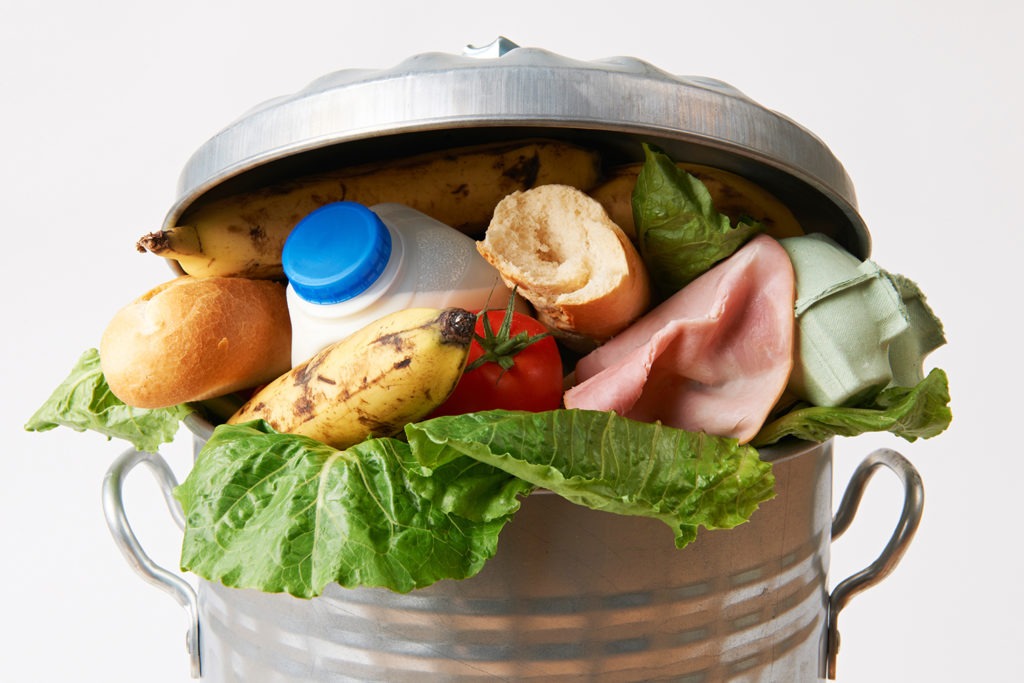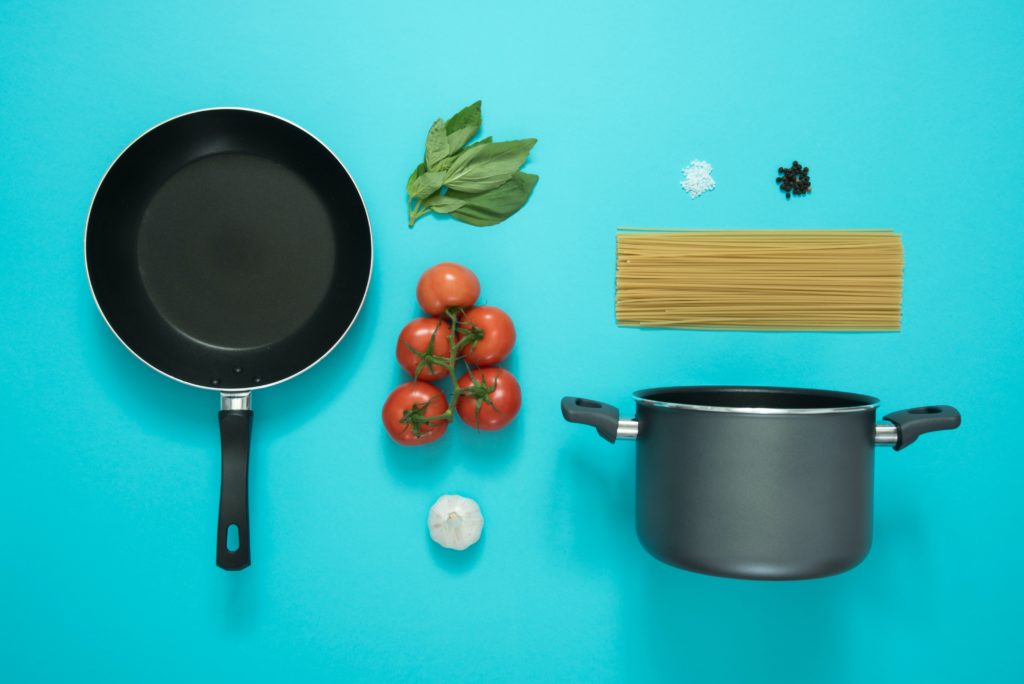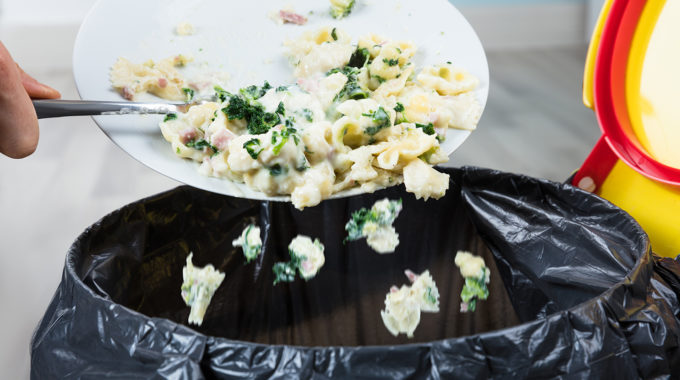Throwaway nation: food waste in Australia
Each year, food waste in Australia is estimated to come in at 7.6 million tonnes across the supply and consumption chain. According to the Department of Agriculture, Water and the Environment, that equates to 312 kilograms of food per person each year. While primary production and food manufacturing cause a large proportion of this food waste, households are also a big part of the problem. Australian households are contributing 34 percent, or a whopping 2.5 million tonnes, towards our national food waste figures.
Some fast facts, courtesy of Foodwise:
1. Australians throw away up to 20% of the food they buy.
2. This is equal to tossing out one in every five bags of groceries you buy.
3. It’s also equal to throwing away $1036 a year.
4. Up to 40% of waste in the average household bin is food.

How is this food waste happening?
So, what are families doing to create this much food waste in Australia? According to Associate Professor Karli Verghesi, a Principal Research Fellow in the School of Design at RMIT University and the Reduce Program Leader in the Fight Food Waste Cooperative Research Centre, part of it comes down to a lack of planning.
“Sometimes we don’t plan our meals, or our shopping,” she says. “We go to the supermarket without looking in our fridge, pantry or freezer to see what food we might already have that we can use to construct meals.”
This means we head out and blithely buy foods that are potentially doubling up on what we already have at home. And if this food is perishable, it still needs to be used within a certain timeframe, or else it goes off in the fridge or cupboard and ends up in the bin.

Love your leftovers
Okay, so one big way that you can get on top of the food waste in Australia is to plan ahead. Consider what you’ve got going on that week, how many people need to be fed, how many meals need to be prepared, and what you’ve already got on hand to cook with.
“Have a plan and stick to it,” Verghesi says. “Plan to make X tonight and Y tomorrow. And if there are leftovers, plan to have them the following day. It’s about thinking things through.”
It’s also about serving sizes and overall meal sizes. You don’t want to be making too much food, which then can’t be eaten in time. If you do cook up a big batch of something, pack some up for tomorrow’s lunch, or portion it out and freeze for another occasion.
Leftovers are one of the five main food categories that we waste more than others, along with meat, dairy, bread and fresh fruit and vegetables.
“Let’s say we buy, for instance, a capsicum,” Verghesi says. “If we use it in a salad, we might cut it in half, and put the remainder back in the fridge. But then other things might get piled on top of that half-capsicum in the crisper, and we forget that it’s there. And it slowly decomposes to a point where it’s not usable and needs to be disposed of.”

The pros of packaging
Many of us think of food packaging as the root of all evil, and a major contributor to landfill. But packaging is actually a critical component in the food supply chain.
“Packaging plays an important role in containing and protecting our food and maintaining food safety, quality, freshness and nutritional value,” Verghesi says. “Anything coming off a farm or from a manufacturing facility will come through the supply chain to a retailer through to our household in some type of packaging. We might not see it; it might not be a bag or a bottle, but it might be a carton, or a crate.
“Packaging is designed to contain and protect a piece of food or a food item. It’s not just effective at maintaining freshness; it’s also protecting that food from bumps and damage as it travels through the supply chain.”
The truth is, if we didn’t have food packaging, we would end up with a lot more food waste. And food waste has a greater overall environmental impact from a greenhouse gas perspective than packaging does.
“While there are negative perceptions, packaging does play a really critical role,” Verghesi says. “Think of things such as resealable packages, or the portioning of packs. Instead of buying a 400-gram pack of ham, you can buy a pack of four individualised little 100-gram portions. You can open one of them, and the other 300 grams will be sitting neatly in their own little containers for future use.”

Dairy misdeeds
How you store your packaged perishables can also have an impact on your potential food waste. Yoghurt is a good example here. If you buy a tub of yoghurt, but then buy another two tubs a week later before the first has been opened, utilise the “first in, first out” rule – the yoghurt you bought first gets eaten first.
“You should also rotate your stored food items so that you consume those with the closest use-by dates first, placing those with the furthest dates at the back of the fridge or cupboard,” Verghesi suggests.
“Many of us have purchased multiple items in recent months. We should be ordering our pantry, or our kitchen, accordingly.”
So when you unpack your groceries, don’t just plonk a new item down in front of an existing item. If you do, that existing item gets pushed to the back even though it needs to be used sooner. Instead, the newer product usually gets used first. And, depending on what the product is, you potentially have that original pack sitting there needing to consumed, but by the time you realise it’s there, it could be out of date.
“Simple changes like this can help reduce Australian households’ contribution to overall national food waste figures,” Verghesi says.

Value your food
One simple way to help stop yourself from wasting so much food is to start valuing it more.
“There’s a whole broad path around valuing foods and appreciating what goes into growing and producing food,” Verghesi says. “I think if people appreciate what actually goes into growing things, then they become more mindful of what they purchase.”
If you start small by making a few changes in the way you shop, plan meals and store food, you should soon notice that you’re wasting less and making the most of what you have. Together with being more mindful of how precious our food resources are – and feeling thankful for living in such a food secure country – this should help you to do your bit towards reducing the enormous amount of food that goes to waste every day in Australia.
“Wasting food is really a bit of a crime,” Verghesi says. “If you litter, that’s seen as really bad. But if you waste food, it’s not seen that way. But I think people are becoming more aware of it. It’s all about educating people and communicating the right message.
“But in the end, it really comes down to this: whatever you’ve purchased, make sure you eat it. Don’t let it go to waste.”









